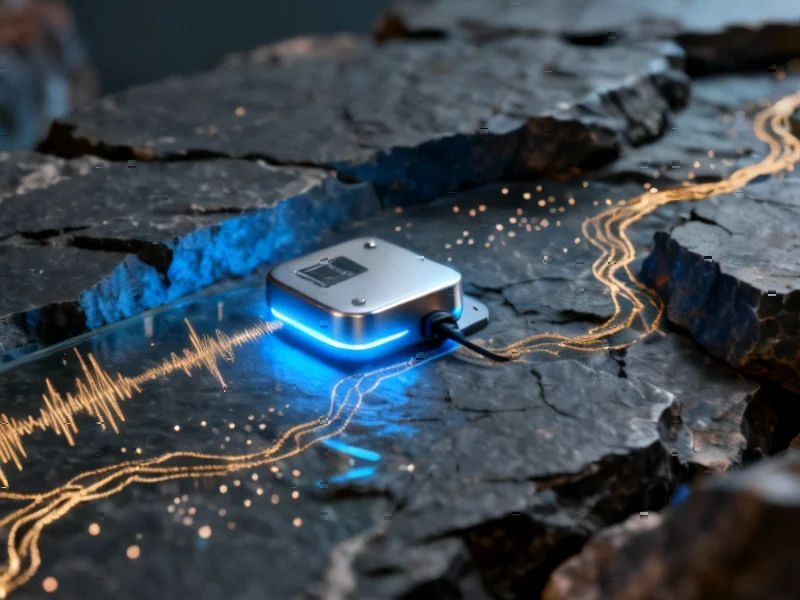When the ground starts shaking, every second counts—not just for people seeking safety, but for scientists trying to understand what’s happening beneath their feet. For decades, earthquake research has been a race against time, with seismologists manually analyzing squiggly lines on seismograms while aftershocks continued to rattle nerves and infrastructure. Now, artificial intelligence is not just speeding up that process—it’s fundamentally rewriting our understanding of how earthquakes work.
Table of Contents
The Seismic Data Deluge
What’s driving this transformation is something every industry from healthcare to finance understands all too well: data overload. According to reports from leading seismologists, the amount of seismic information has exploded in recent years, thanks to innovations like detecting seismic signals over fiber optic networks and using smartphone accelerometers to create phone-based earthquake warning systems. Where scientists once analyzed recordings by hand, today’s data volumes make manual processing practically impossible.
“Now the only—almost—way that you can deal with the seismic data is to go to automatic processing,” says Mostafa Mousavi, a seismologist at Harvard University who coauthored a comprehensive review of machine learning in earthquake seismology. This shift from human expertise to algorithmic analysis represents one of the most significant changes in geophysics since the invention of the modern seismometer.
Phase Picking at Machine Speed
One of AI’s most immediate impacts has been in phase picking—the process of identifying when different types of seismic waves arrive at monitoring stations. Earthquakes generate P waves (primary) and S waves (secondary) that show up as distinct patterns on seismograms. Traditionally, trained seismologists would hand-select these wave arrivals, a painstaking process that required expertise and concentration.
Today, machine learning algorithms trained on vast datasets of past quakes can perform this task with astonishing speed and accuracy. Interestingly, the practice has become so standard that Mousavi notes researchers no longer bother including “machine learning” in paper titles—it’s simply assumed. The implications are profound: faster, more accurate phase picking means quicker determination of earthquake locations and magnitudes, potentially buying precious seconds for early warning systems.
Millions of Hidden Earthquakes Revealed
Perhaps the most dramatic demonstration of AI’s potential came from a groundbreaking 2019 study that used machine learning to identify more than 1.5 million previously undetected earthquakes in Southern California between 2008 and 2017. These weren’t earth-shattering events—most were so small you wouldn’t feel them standing directly above the epicenter—but their discovery has revolutionized how scientists understand seismic behavior.
Leila Mizrahi, a seismologist with the Swiss Seismological Service at ETH Zürich, explains the significance: “Either you don’t see them by eye, or there’s no time to go and look at all those tiny events.” These miniature tremors, often obscured by background noise, provide what amounts to a high-resolution map of fault behavior. It’s like going from watching a blurry security camera feed to having 4K video of every movement along a fault line.
The practical applications are already emerging. In Oklahoma and Kansas, researchers led by Yongsoo Park used machine learning to build an expanded earthquake catalog that illuminated previously invisible fault structures—many related to wastewater injection from oil and gas operations. Their work demonstrated that 80 percent of larger earthquakes could have been anticipated based on patterns of smaller preceding tremors.
The Forecasting Frontier
Where AI has struggled, surprisingly, is in the area that captures public imagination most: predicting major earthquakes. Despite the hype around artificial intelligence’s pattern-recognition capabilities, machine learning approaches haven’t yet outperformed traditional statistical methods for earthquake forecasting.
“They are not outperforming the traditional ones yet,” Mousavi confirms, having summarized the state of the field in Physics Today. The challenge is fundamental: large, damaging earthquakes occur too infrequently along any given fault to provide sufficient training data for machine learning algorithms. Unlike phase picking, where abundant examples exist, major quakes are statistical outliers that don’t play by the same rules as their smaller counterparts.
Still, researchers are making incremental progress. Mizrahi has been working on using AI to speed up aftershock forecasts in the critical hours after a major earthquake. While the AI approach performs much faster than traditional methods, she acknowledges they’re still evaluating how effective it truly is. The goal isn’t necessarily better predictions, but faster ones that could help emergency managers make life-saving decisions about building inspections and evacuations.
Global Applications and Future Directions
The AI revolution in seismology is spreading worldwide with remarkable results. In Taiwan, researchers used machine learning to analyze a magnitude 7.3 earthquake that killed at least 18 people in April 2024. Their AI-generated catalog was about five times more complete than the human-analyzed version and was produced in a day rather than months. The detailed mapping revealed new information about fault locations and orientations that could inform building codes and emergency planning.
Hsin-Hua Huang of Academia Sinica in Taiwan believes such AI-powered catalogs “will become the standard in every earthquake-prone region in the future.” This represents a fundamental shift in how seismic monitoring networks will operate, moving from periodic human analysis to continuous machine learning-driven interpretation.
Looking ahead, researchers are exploring even more ambitious applications. Early work suggests machine learning could improve earthquake early warning systems by more accurately estimating ground motion in the seconds after a quake begins. Other potential applications include using AI to distinguish between natural earthquakes and those induced by human activities like fracking or geothermal energy production.
The Human Factor in Machine Learning
Despite the excitement, seismologists caution against over-reliance on AI tools. Park emphasizes the need for maintaining quality control to ensure proper interpretation of AI analysis results. The risk isn’t that machines will replace human expertise, but that scientists might trust algorithmic outputs without sufficient understanding of their limitations.
This tension between automation and expertise echoes similar debates in medicine, finance, and other fields where AI is transforming professional practice. The most successful implementations will likely involve human-machine collaboration—algorithms handling the data-intensive grunt work while scientists focus on interpretation and theory-building.
As Mizrahi puts it, “We’re on the way.” The journey represents one of the most promising intersections of artificial intelligence and fundamental science. While AI may not yet predict the next “Big One,” it’s already revealing patterns and processes that have eluded seismologists for generations—and in the process, helping build a safer future for communities living in earthquake country.



